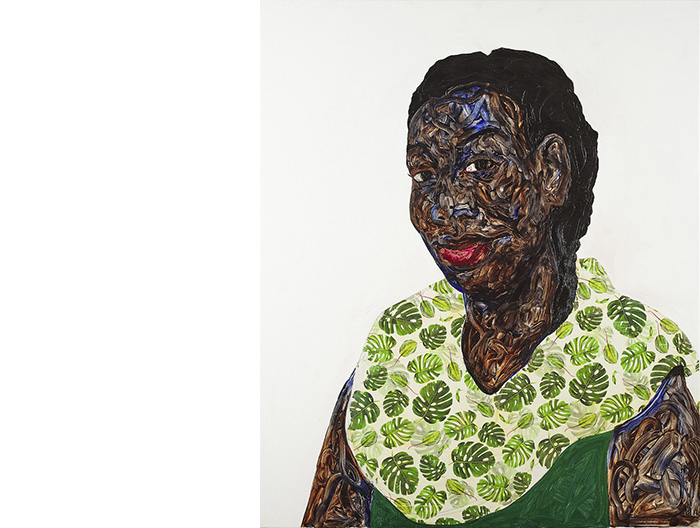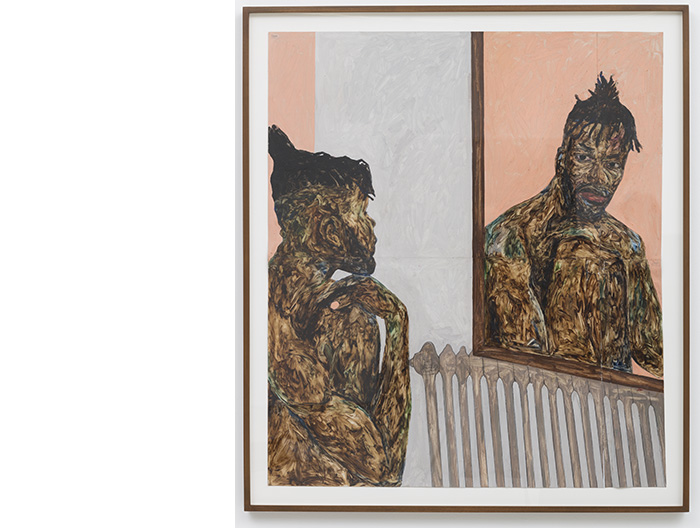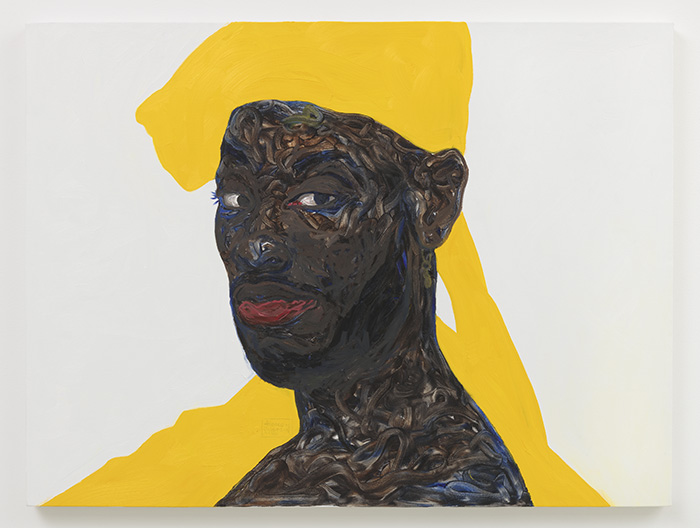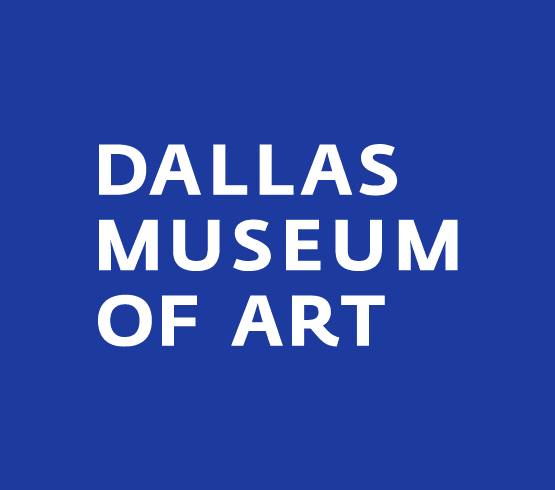Money and the instruments used to make it always feel a bit like sleight-of-hand to me—a trick that certain practitioners have honed to mystify us rubes. Some people feel the same about art itself, as though attaching monetary value to a piece of cloth stained with pigment is any weirder than assigning purchasing power to a piece of green paper. We like money because it feels like a protection against the ugly realities of not having it, and we despise it because it feels so divorced from our human needs and experiences. But to appreciate art, we have to be able to separate it from money. To feel something human, we must tell ourselves that capital is none of our business. Ghanaian art superstar Amoako Boafo has had the kind of beginning to his career that makes this kind of mental separation necessary, lest understanding get lost in a swirl of zeroes. Amoako Boafo: Soul of Black Folks, curated by Larry Ossei-Mensah, seeks to separate Boafo’s work from its relationship to capital and establish it in the conversation of art and artists, where it belongs. These paintings (and their magic) are very much in the realm of the real.
In the move from moAD to the CAMH the show has “expanded from 18 to over 30 works,” a collection of the expressive portraits Boafo has become famous for. Each figure sits within an austere background, gazing outward toward the viewer. Boafo’s method of rendering skin is the most distinctive feature of his work. With gloved fingers he lays down complex hues of red, blue, and purple to describe deep skin tones. His figures stare back at the viewer: powerful, serene, relaxed.
Additionally, the friends, acquaintances, and family members that are the artist’s subject impart their own mark on the work through bold fashion choices, patterns and color. They assert themselves as subjects. “Fashion is a big part—it’s part of articulating images that are devoid of the white gaze,” Ossei-Mensah explains. The importance Boafo places on fashion was recognized in that field of visual expression as well. In 2020 Boafo collaborated with Dior on a collection of garments based on his paintings.

1 ⁄4
Amoako Boafo, Black and White, 2018. Oil on paper, 39 3/8 x 27 1/2 inches. Image and work courtesy private collection and Roberts Projects, Los Angeles, California. Photo by Robert Wedemeyer.

2⁄4
Amoako Boafo, Monstera Leaf Cape, 202. Paper transfer and oil on canvas. Image and work courtesy the artist.

3 ⁄4
Amoako Boafo, Reflection I (detail), 2018. Oil on paper, 51 1/8 x 43 3/8 inches. Image and work courtesy Roberts Projects, Los Angeles and Private Collection. Photo by Robert Wedemeyer.

4 ⁄4
Amoako Boafo, Seye, 2019. Oil on canvas, 36 x 48 inches. Image and work courtesy private collection and Roberts Projects, Los Angeles, California. Photo by Robert Wedemeyer.
Both Ossei-Mensah and Boafo traveled to Houston in the planning phase of the exhibition, to decide if it was the right locale for such a defining show for the artist. Ossei-Mensah says, “Houston [is an] interesting intersection and cultural meeting point. It’s not just Texas, it’s an amalgamation of the region.” He mentions the importance of Rick Lowe and Project Row Houses, as well as the deep imprint of the Menil and iconic James Terrell works. “[Boafo] is someone who responds to the space,” Ossei-Mensah explains. A major feature of the show will be a wall-filling mural. “If you want to see this mural you have to come to Houston. It’s an ephemeral piece.”
For Boafo, part of this self-preservation has been establishing his studio in Ghana, a feat made possible by the interconnectedness of the art world through Instagram and other digital modes of communication. Ossei-Mensah says, “for me it’s a fantastic tool. It helps level the playing field. It creates another sense of access.” This widening of our field of artistic vision is part of what makes it possible for Boafo “to be able to be in Accra and make work,” he says. “It’s a testament to how things have shifted.” However, “it’s not the main way art should be seen.” After all, what Boafo is offering is nothing less than a glimpse at the soul, a substance that can’t be captured or quantified, and that he describes with the simplest and most profound of tools—his own hands.
—CASEY GREGORY




